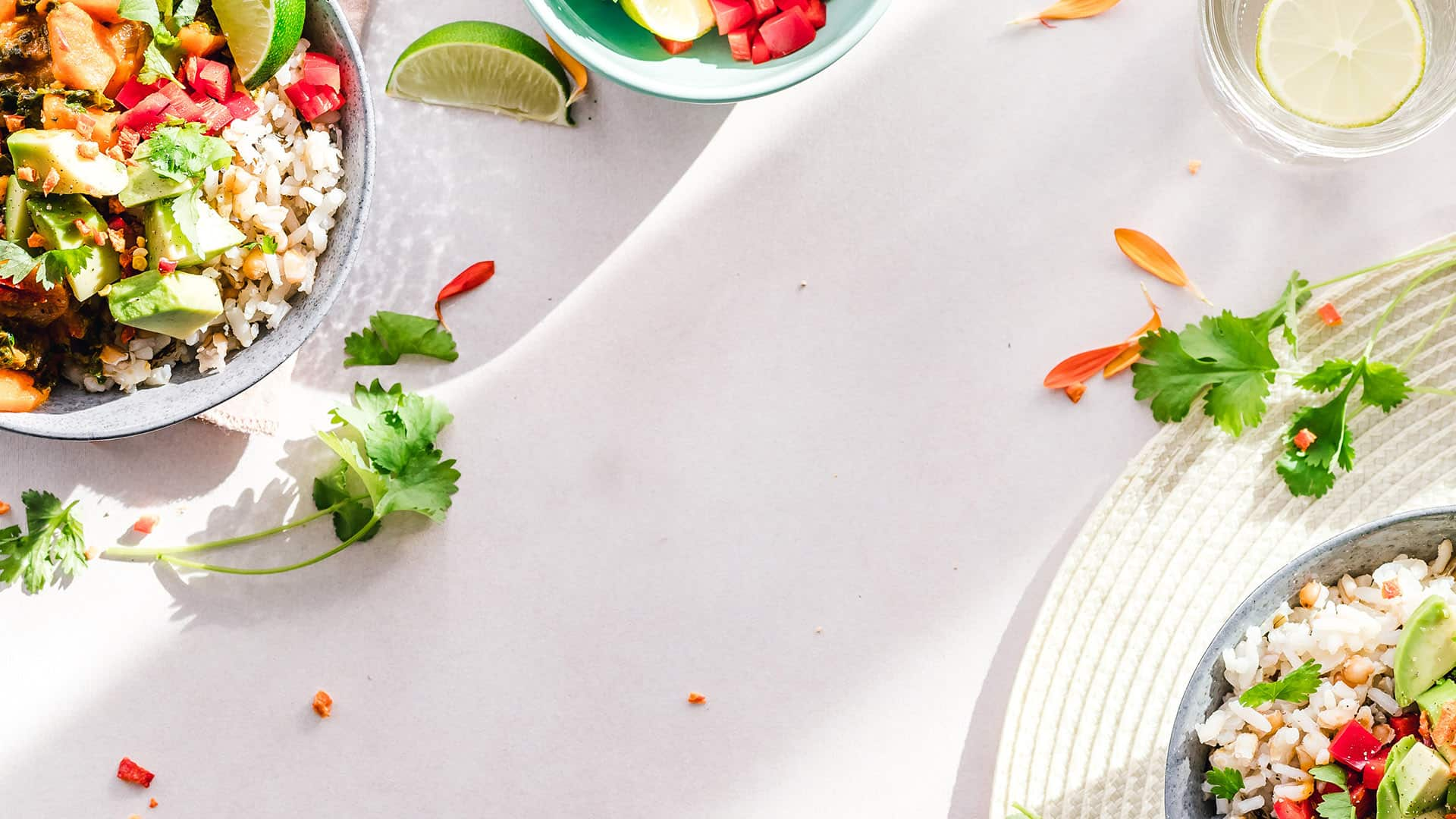
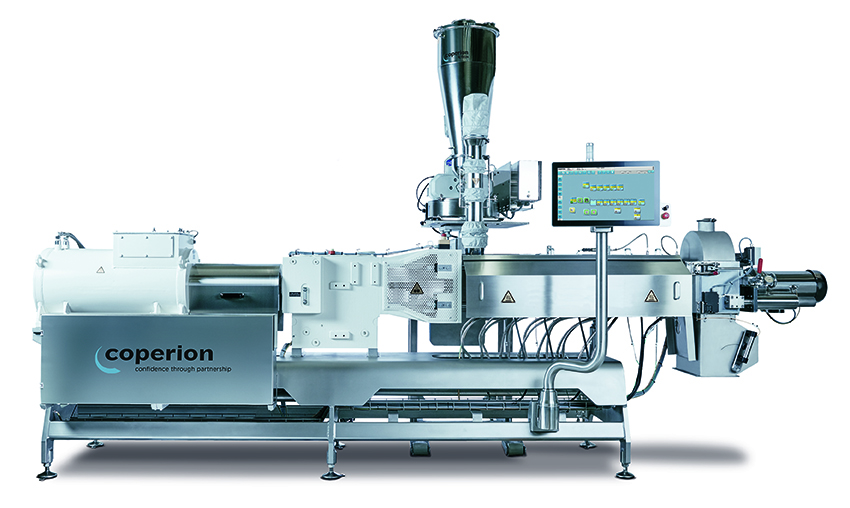
Deep Dive: Processing power
Nick Bradley learns that automation in the manufacturing process could go a long way in reducing costs to achieve price parity with conventional proteins, and subsequently greater consumer adoption
According to a 2022 Good Food Institute report that scrutinized the capacity requirements to meet the anticipated 2030 demand for plant-based meat, the industry will need to operate at least 800 manufacturing facilities, each producing on average 30,000 metric tons of product annually. The price tag to realize those ambitions? Around US$27 billion. “This underscores the importance and urgency of bold infrastructure investments,” believes John Sheehy, Global Key Industry Manager of Plant Proteins at Coperion.

Completely automated systems – from automated material handling of the raw ingredients prior to the mixing, extrusion and/or packaging steps to high-accuracy feeding devices – are critical to meeting the requirements for this growth, Sheehy feels. “When designing a system to automate conveying of the plant protein powder to the packaging line, a variety of conveying methods may exist, but it is important to evaluate the overall cleanability of the system as well as efficiency when choosing the right solution,” he says.
Additionally, when designing an extrusion line for a plant-based meat product, Sheehy says it is important to look at suppliers that can provide everything from the initial ingredient receipt through delivery to the blending and/or extrusion process. “Doing this will help to shorten the overall development to market release time, and improve the system efficiency,” he adds. (See Selecting the right partner sidebar.)
Designed for success
With the expected growth in manufacturing capacity requirements, it is vital, Sheehy maintains, that equipment and system suppliers be prepared to design and engineer solutions with maximum efficiency and overall automation for the alternative protein production process stream.
“Although the [alternative proteins] industry is still relatively small, it offers a tremendous amount of potential in product innovation,” he notes. “By utilizing the processing expertise of manufacturers such as Coperion – which can assist in innovation research and development and product scale up in production – an easier, faster and more economic path to market can be achieved.”
.jpg)
“The key for the alternative proteins sector as it looks to scale and increase its commercial viability is that a large proportion of downstream processing will rely on existing industrial automation,” believes Matthew Carr, Business Unit Director at NIRAS (previously known as Integrated Food Projects). “Packing and packaging, for example, utilizes the same automated processes regardless of whether the product is a conventional meat product or an alternative protein product,” he suggests.
Alternative protein production does, however, rely on additional upstream, or front-end, automation processing to create the product itself. “For example, high-moisture extrusion is one manufacturing process that is unique to the alternative proteins sector and automating this type of process will be key for producers to increase the commercial viability of their product.”
There are a huge number of technologies that are being adopted by alternative protein manufacturers, whether in the processing stage or elsewhere in the supply chain. However, the processes to form products such as sausages, burgers and meatballs are all largely the same, whether it’s a conventional meat or alternative protein product.
Cost considerations
In any manufacturing environment, automation costs money. High-speed production lines, sophisticated process controls, and robotics and automated materials handling equipment all have an initial high price tag, says Stephen Dombroski, Director of Consumer Markets at QAD. Are such investments out of reach for startups? “Most young companies will typically work with co-manufacturers to initially avoid the cost of investing in infrastructure,” suggests Coperion’s Sheehy. “As demand increases and the need for investment in process automation infrastructure becomes more apparent to independently produce your products and control your supply, it becomes increasingly important to work with an experienced system supplier. The expertise of manufacturers like Coperion – which can assist in innovative R&D as well as scale-up to full production – is a valuable asset when planning a production line.”
“The key is to know where to spend money and where costs can be kept down,” continues Carr, who adds that automation is essential for the long-term viability of food security as a whole due to the scarcity and increasing cost of labor. “The requirements to reduce the number of manual tasks is even more critical for startups to scale,” he adds. “It’s important to note startups don’t need a full automated line from day one. CapEx for automation should be focused on the elements of the supply chain that provide the most value and protects your intellectual property.”
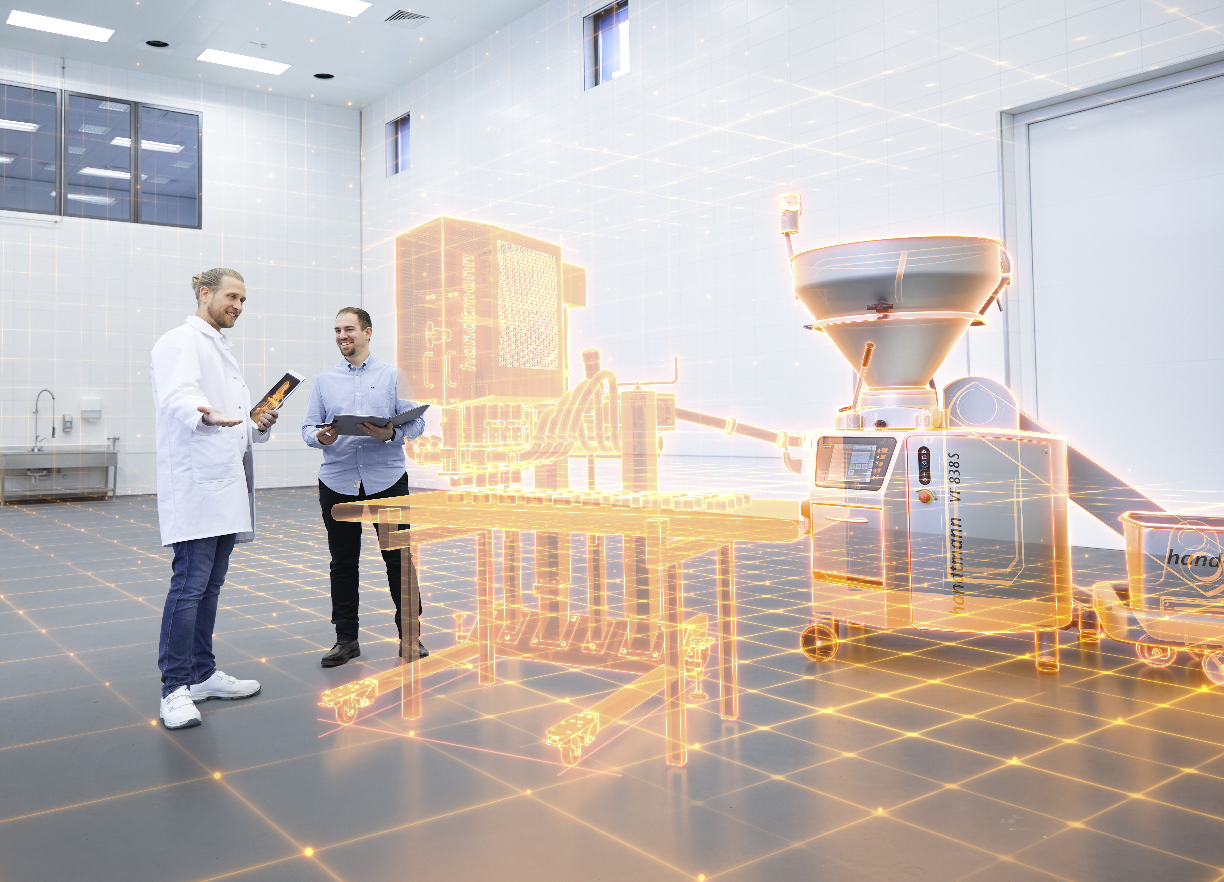
It’s also worth highlighting that the future of the alternative proteins sector is not all about major projects – startups need to find a cost-effective way of getting their product off the ground and onto shelves. “Automation can be expensive, so for a large proportion of projects, startups should be leaning into existing supply chains to make their processes as cost efficient as possible,” Carr advises.
“A major challenge of meat alternatives is that they have to keep up in the price war for industrially cheap meat,” reports Ryan Kromhout, Global Industry Division Manager Food at measuring specialist Krohne (see Can automation help alternative protein manufacturers hit price parity with conventional proteins? sidebar). “This is achieved not least thanks to advanced, highly automated production methods and continuously running, uninterrupted processes to make highly efficient use of the aforementioned machinery.”
Process
Legumes, grains, soybeans or oilseeds form the basis for the production of many alternatives such as plant-based burger patties and minced meat. In an upstream process, a premixed powder is produced from these protein raw materials, which subsequently has to be metered into the extruder feed with the addition of water. Some of these powders, though, are very fine, sticky and therefore difficult to meter.
“At this point, many producers today interrupt the process to weigh the mass on a scale,” Kromhout adds. “The pre-product is collected in a container until a certain mass is reached, and only then is it fed into the next process step – i.e. the next process step has to wait and the process flow is interrupted. These process interruptions cost time and efficiency and are to be avoided. Instead, continuous inline weighing of the materials by Coriolis mass flowmeters, which can be easily integrated into the process engineering process chain, provide an ideal solution.”
Kromhout believes we are at a stage where the industry could leap some steps in evolution that have been taken in the automation of traditional production processes and go straight to common practice learned in the chemical industry or in pharma processing. “The large conflict in this, however, is for engineering companies wanting to replicate (‘copy-and-paste’) traditional designs onto this emerging market with an understandable motivation. The producing client should express his request for a continuous process instead of batch-type processing, with a seamless scalability to large production capacity,” Kromhout advises.
There are special requirements unique to alternative proteins and a need for new processing solutions that come with alternative proteins
Well known to the industry, Handtmann is a global supplier in the field of process technology for the efficient production of liquid, pasty and firm foods. These include process and line solutions for product preparation, subsequent portioning, forming, co-extrusion and dosing as well as the depositing, handling and packaging of the products. “In the alternative proteins sector, our technology is used in the production of a broad range of products, from plant-based drinks or vegan cheese, meat and sausage substitutes to alternative seafood and traditional products,” reports Dr Michael Betz, Head of Food Technology & Industry Sector Management at the German machinery giant Handtmann. “With its modular design, our technology offers easy scalability of all production processes, be it a solution for small producers or start-ups or a fully automated industrial solution.”
Taking a steer
Let’s not forget that there are many technologies from conventional food processing that can be extrapolated to alternative proteins, Betz stresses. “The focus at present is on imitating the structure, texture, taste and format of traditional animal protein-based products, which generally imparts the same underlying processing technologies. But there are also special requirements that are unique and a need for new processing solutions that come with alternative proteins.” Betz offers two examples that highlight how Handtmann is having to innovate. “Vegan sashimi imitates the structure of natural fish fillet with its white fat marbling, but there is no traditional process to produce such a product from the bottom up. That is why we have developed a process to produce such vegan sashimi products. Another example would be vegan bacon, for which we have invented a co-extrusion process to obtain the desired layered structure.”
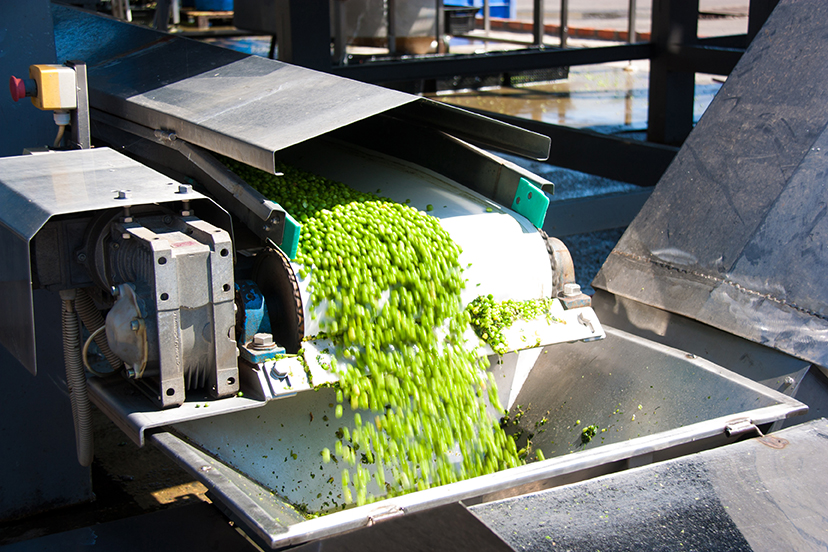
starch, vitamins, and minerals
Betz considers automation to be right if certain conditions apply (depending on location and cost of labor/staff): high performance and production volume of single products, consistent processes, high level of monotonous and strenuous work, easy scalability, labor shortages, increase of sales rate and performance improvement. “However, hygienic requirements (less human contact), greater accuracy and consistent quality are also valid determinants,” he adds. “In terms of product portfolio and production volumes, for example, we offer scalable machine solutions and various functions (dosing, co-extrusion, portioning, sausage linking, forming, etc), which can be automated at different scales.”
For Coperion’s Sheehy, the broad spectrum of material properties of the raw ingredients – whether soy, mung bean, pea, fava bean, fungi and/or algae – can greatly affect the proper design and efficiency of the process.
Coperion first observed a large increase in sales inquiries for extrusion technology for use in producing Textured Vegetable Protein (TVP) around six or seven years ago. This, he notes, led to a significant increase in the investment of resources in addressing the needs of this market.
Today, Coperion offers complete system solutions for the production of these products including all of the material handling (e.g. conveying and feeding of the raw ingredients to the blender) as well as the extruder and ancillary equipment after the extrusion process. “Whether designing material handling and conveying systems for plant protein powders or providing the most efficient means of transfer to the packaging lines or designing extrusion lines for meat substitute products, we have provided global equipment and systems for decades,” Sheehy reports.
Best of both worlds
Coperion’s hybrid design TVP and HMMA extruder for plant-based products offers a great deal of flexibility. “With only a minimum of retrofitting effort and time, both texturized vegetable protein (TVP) and high-moisture meat analogues (HMMA) can be produced on the same ZSK Food Extruder,” Sheehy adds.
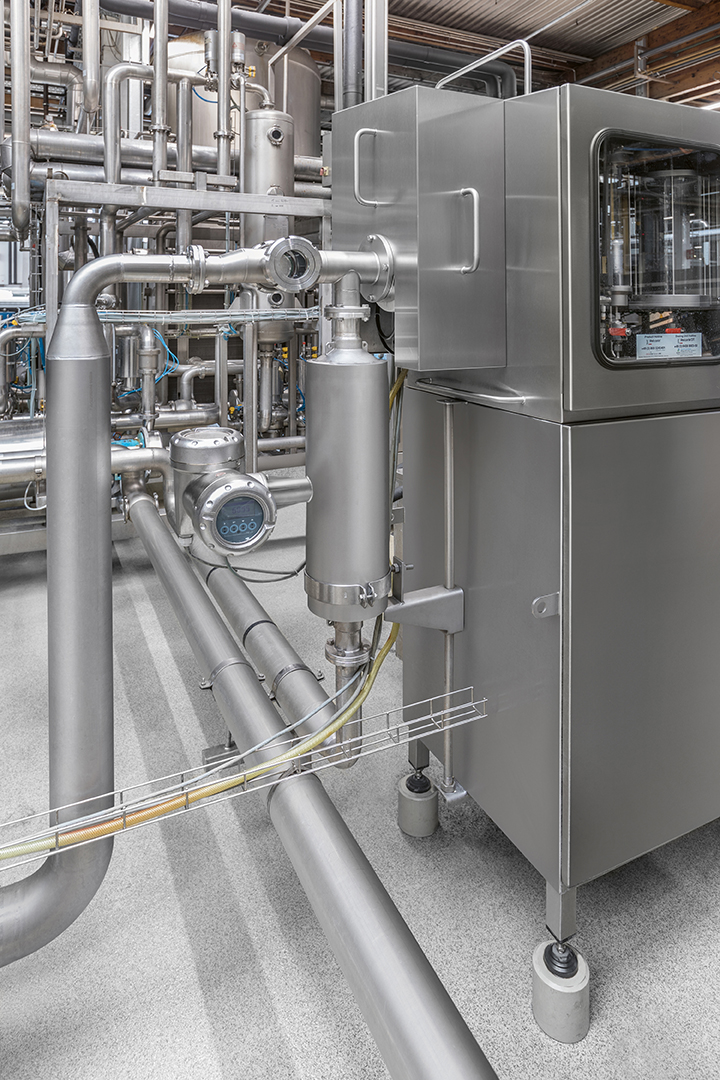
enable ingredients to be measured accurately and with long-term stability
TVP is used both as a meat substitute and as a supplement to meat products, while HMMA is primarily used as a high-quality meat-analog product in ready-to-eat meals. For producers of both, though, the hybrid design can mean big savings in investment and production space, as the same line can be reconfigured to produce a variety of products, and provides maximum flexibility to be able to profitably react to changing market demands, even at short notice.
Sheehy explains that one of the most important factors in processing plant proteins as opposed to meat processing is the high percentage of powder handling required in plant protein processes. “As many of these ingredient powders are organic, there is also a higher safety risk for the presence of combustible dusts,” he says.
MIE (the minimum energy required to ignite) can also change significantly when dealing with the same material but smaller powder particle sizes.
“It is important when designing a system for the transfer of these powders – whether that’s from the spray dryer to the packaging line, or from the bulk bags to the feeders above a mixer and/or extruder – that the systems provider chosen outlines all of the possible design parameters to ensure safe operation,” cautions Sheehy.
In addition, although the processing standards may not require adherence to the meat industry’s strict USDA guidelines, proper attention must be paid to how the system is to be cleaned and maintained. The capability to provide process equipment which can not only meet cleaning requirements but also provide for quick changeover without risk of cross contamination is also extremely important.
Although plant protein manufacturing processes require a considerable amount of powder processing, there are many downstream pieces of equipment that are similar to conventional protein processing. For example, when handling TVP, there is a lot of overlap in the equipment used for conventional meat processing – i.e. bowl mixers, forming machines, stuffing machines. Downstream of the extruder, there are many similarities in the bleeding, mixing, portioning and packaging. Vegan Ready-to-Eat (RTE) meals would also be quite similar.
“Large engineering companies will try to sell proven solutions, coming from meat processing while this could be the right moment to assess and investigate whether better technologies could be used,” believes Krohne’s Kromhout.
In addition to a consistent quality of the raw material, the production of meat alternatives relies on stable and uniform process conditions: the desired product quality and achievement of the desired mouth-feel (the ‘bite feel’) depends on various process parameters and control variables such as feed quantities, pressure, temperature, viscosity, filling levels and residence times in the process.
“For example,” Kromhout highlights, “precise heating in the extruder is of particular importance”. Textures and their cut resistance also depend on pressure. “And for consistent taste as well as quality, shape and color of the imitation meat, ingredients such as spices and flavors must always be precisely dosed into the processes, and cooling or cooking temperatures as well as pressures must be monitored, and densities measured.” Particularly where very viscous, sticky and highly adhesive mixtures such as protein masses are measured and processed, it is important to have food-compliant materials without dead spaces and that meet the EHEDG or 3-A certifications as well as the material requirements according to EU law and FDA.”
What Carr finds interesting about the alternative proteins market is that, as well as existing players such as Oatly and Quorn, there are a number of emerging businesses that are purpose-led and focused on tech-based solutions to sustainability and planet health. “Remilk is a great example of an alternative brand that uses microbial fermentation to create a dairy product which places its mission and ESG issues at the heart of its brand,” he says.
“At NIRAS, we help these clients to work out where and how they can scale their production while recognizing which traditional manufacturing processes can be outsourced,” Carr explains. “For these innovative alternative protein manufacturers and brands, recognizing how they can protect the IP of their product and manufacturing processes and where to lean into existing markets to outsource is the key to keep costs down and scale.”

Is automation right for you?
A big question is, how do you know when automation is right for you? “This probably can be answered by scale and looking at labor intensity of the production,” says Kromhout. “What is my current idea of how automation looks like? Automation is right for you if you find the right price point: there is a large bandwith of automation components available and a corresponding consultation will find the right degree of automation for you.”
“The key consideration of when alternative protein brands and manufacturers should consider automation is when they will get payback compared to labor costs, but it’s important to consider other benefits that might not be qualitative, such as traceability, consistency and flexibility,” adds Carr.
The answer to that question is relatively simple, though, according to Dombroski. Return on investment. “When you invest in automation, an analysis needs to be done on the payback. What is the initial outlay cost for automation and how long will it take to pay for itself. What is the total cost of ownership for these automation technologies? And ultimately, will these costs, over time, translate into higher profits, better efficiencies and delivering products to the customer faster and more efficiently?”
If you have any questions or would like to get in touch with us, please email info@futureofproteinproduction.com







